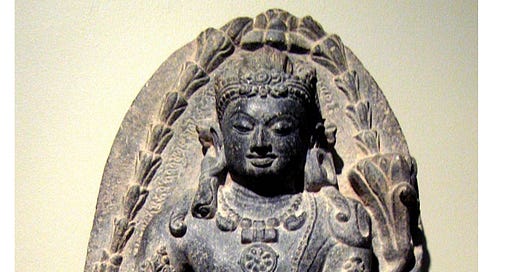To read previous newsletters in the History of Mankind, which is pretty long, you can click here.
Even as the construction of Hindu temples boomed elsewhere in India from around 200 BC, Buddhism gained the upper hand among the Kushans because it was seen a religion more suited to rule over subjects of multiple ethnicities and traditions.
Indeed, as it was mixed and matched with Zoroastrian and Hellenistic ideas and worship, a new form of Buddhism eventually arose in the region, later called Mahayana, or “the great vehicle,”1 in which Buddhist ideas were combined with steppe pantheism: and of the early 21st century this is the dominant form of Buddhism now persisting in much of the world, particularly in East Asia.
At the center of Mahayana belief is the very polytheistic idea of immortal bodhisattvas, worshipped as guides for the faithful in their long road towards nirvana – an obvious transposition of the notion of multiple minor gods available to provide inspiration and help in various ways, in direct opposition to the earlier view of bodhisattvas as rare, temporary occurrences.
The highest goal in Buddhist tradition was the attainment of nirvana, but Mahayana adherents see this as lesser goal; the higher one, instead, is in following the path of a bodhisattva and attaining Buddhahood. This is a key distinction as, effectively, it implies that men who have attained great wisdom refrain from taking the final step to depart existence, and remain engaged with the world to help others achieve this goal.
Keep reading with a 7-day free trial
Subscribe to A History of Mankind to keep reading this post and get 7 days of free access to the full post archives.




